Agentic AI vs. Generative AI: What’s the difference and why it matters?

AI is everywhere these days, but the terminology can get confusing. Two terms you’re probably hearing more often are “Agentic AI” and “Generative AI.” While they’re both powerful AI technologies, they work in completely different ways and solve different problems.
If you’re trying to figure out which one makes sense for your business or just want to understand what all the buzz is about, this guide breaks down everything you need to know.
What is Generative AI?
Generative AI creates new content based on patterns it learned from training data. Think of tools like ChatGPT writing emails, DALL-E creating images, or GitHub Copilot helping write code. These systems are really good at making human-like content when you give them the right prompts.
But here’s the thing: generative AI is reactive. It only responds to whatever input you give it based on patterns it already knows. It can’t make decisions on its own or plan ahead for changing situations.
How Generative AI works?
Creates content: The main job is making new, original content that is based on what it learned from training data. This includes writing, creating artwork, making music, or generating code. A simple example of Generative AI would be use of tools like ChatGPT and Claude.
Simple input-output: Generative AI follows a straight path from start to finish in one step. You give it a prompt, and it gives you an answer right away without going back to improve it.
Recognizes patterns: These systems find patterns in huge amounts of data and use statistics to create new content that follows similar patterns while staying original.
Needs human input: Generative AI has limited independence. It can’t act on its own and needs you to tell it what to do. It processes what you give it and creates output based on learned patterns, but it can’t start actions by itself.
Doesn’t learn in real-time: Once trained, Generative AI works based on what it learned during training. It doesn’t get better from new conversations unless someone re-trains it with updated data.
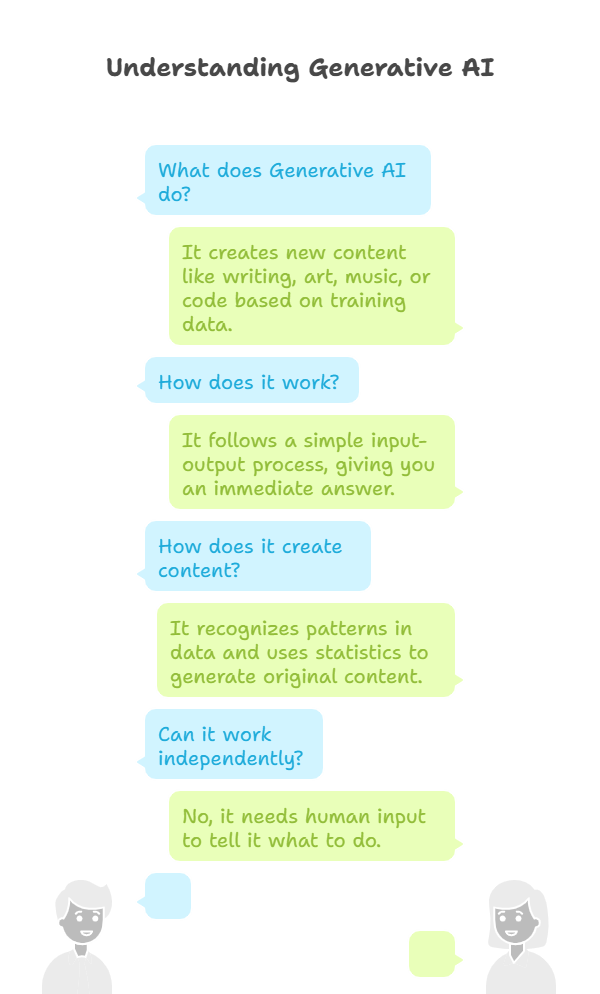
What is Agentic AI?
Agentic AI is more advanced. Instead of just responding to prompts, these AI Agents can act on their own to reach specific goals. They can plan, make decisions, and change their approach when things don’t go as expected. Most importantly, they can take the lead and set goals.
The big difference is that AI Agents work through a cycle of thinking, researching, and improving. This process involves constantly checking their work and making it better. They can work independently, learn from each step, and handle tasks that need ongoing problem-solving.
How Agentic AI works?
Works toward goals: AI Agents operate with clear objectives in mind. They don’t just respond randomly; they actively work toward something specific.
Works independently: These systems can operate for long periods without constant human supervision. Think of them like a robot that works without a human controller, figuring out what to do next based on what’s happening around it. Based on triggers and user inputs, AI Agents can function autonomously.
Plans multiple steps: AI Agents break down complex tasks into smaller pieces, create plans, and change those plans when needed. They don’t just make simple choices; they look at many options and think about what might happen.
Uses tools: Many AI Agents can use different tools, APIs, and external resources to get things done, from browsing the web to querying databases to working with files.
Understands surroundings: For AI to make smart choices, it needs to understand what’s going on around it. It does this through sensors or data. A robot uses cameras to “see” obstacles and then moves around them.
Learns and adapts: The Agent learns from what it does and what happens. When it runs into problems or failures, it adjusts. For instance, an AI that recommends movies learns what you like and gets better at suggestions over time.
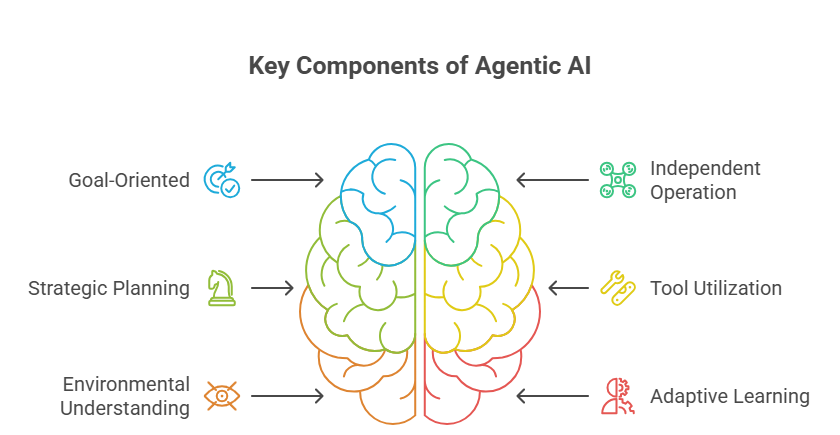
Examples of Agentic AI applications
Research assistants: AI that can do complete research by searching multiple sources, putting information together, and presenting findings.
For instance, check out this lead researcher AI Agent:
Business process automation: AI that can handle complex workflows like customer service, data analysis, or creating reports.
For example, have a look at the Tars customer support AI Agent:
Personal digital assistants: Advanced AI that can manage schedules, make reservations, handle emails, and complete various personal tasks.
For example, have a look at the cold email management AI Agent:
Key differences: Agentic AI vs. Generative AI

Credit: Medium Myscale
1. Purpose and function
Generative AI is mainly a creative tool designed to produce content. It’s great at tasks like writing, image creation, and code generation, but it usually needs human direction for each step.
Agentic AI is designed to be a digital worker or assistant that can complete entire workflows on its own. It focuses on getting tasks done rather than just creating content.
2. Interaction pattern and workflow
Generative AI follows a conversation model where humans give prompts and the AI responds. Each interaction is usually independent. The process is straight-line, producing a basic result that meets the initial prompt but doesn’t account for edge cases or testing multiple times. This shows the limitations of Generative AI in handling more complex or adaptive tasks.
Agentic AI can work on ongoing projects, keeping context and working toward goals over long periods without constant supervision. It works through repetitive, cyclical workflows that include continuous self-checking and improvement phases.
3. Decision-making ability
Generative AI does basic decision-making, mainly deciding how to respond to the immediate prompt and selecting outputs based on patterns it learned. However, it doesn’t look at multiple alternatives or consider consequences. For example, when creating text, it picks the most likely next word or phrase based on training, but it doesn’t make complex, layered decisions.
Agentic AI makes strategic decisions about how to approach problems, which tools to use, when to look for additional information, and how to adapt when initial approaches don’t work. It doesn’t just make simple choices – it looks at many options and considers outcomes, like an AI controlling a stock-trading algorithm that analyzes tons of data, predicts trends, and decides whether to buy or sell stocks.
4. Scope of operation
Generative AI usually handles single-domain tasks well but needs human coordination to combine outputs across different domains.
Agentic AI can work across multiple domains and tools, bringing together various capabilities to solve complex, multi-part problems.
5. Learning and adaptation
Generative AI relies mainly on patterns learned during training, with no real-time learning ability. It has no environmental awareness and works only with data (like text, images) but can’t sense or interpret the physical environment. It can’t understand its surroundings and only reacts to the input it gets, without any external awareness.
Agentic AI often includes mechanisms for learning from experience, adapting strategies based on success and failure in previous attempts. It learns from its actions and experiences, and when it runs into problems or failures, it adjusts accordingly.
Choosing the right approach
The choice between Generative AI vs. Agentic AI depends on your specific needs:
Choose Generative AI when:
- You need content creation help
- You prefer keeping control over each step of the process
- You have specific, well-defined prompts or requests
- You want quick, creative outputs for human review and improvement
Choose Agentic AI when:
- You have complex, multi-step processes that need automation
- You want to delegate entire workflows rather than individual tasks
- You need consistent execution of procedures over time
- You have well-defined goals, but want flexibility in how they’re achieved
Conclusion: Agentic AI vs. Generative AI
Both Generative AI and Agentic AI represent big advances in artificial intelligence, but they serve different purposes in our technology toolkit. Generative AI is great at creating content and responding to specific prompts, making it perfect for creative tasks and human-AI collaboration. Agentic AI offers the promise of independent digital workers that can handle complex, multi-step processes on their own.
As these technologies continue to evolve, we can expect to see more sophisticated hybrid approaches that combine the best of both worlds. Understanding the strengths and limitations of each approach will be important for anyone looking to use AI effectively in their work or business.
The future likely doesn’t hold a choice between these two approaches, but rather a complementary system where Generative AI handles creative and responsive tasks while Agentic AI manages complex workflows and independent operations.
A writer trying to make AI easy to understand.
- What is Generative AI?
- How Generative AI works?
- What is Agentic AI?
- How Agentic AI works?
- Examples of Agentic AI applications
- Key differences: Agentic AI vs. Generative AI
- 1. Purpose and function
- 2. Interaction pattern and workflow
- 3. Decision-making ability
- 4. Scope of operation
- 5. Learning and adaptation
- Choosing the right approach
- Conclusion: Agentic AI vs. Generative AI


Build innovative AI Agents that deliver results
Get started for freeRecommended Reading: Check Out Our Favorite Blog Posts!
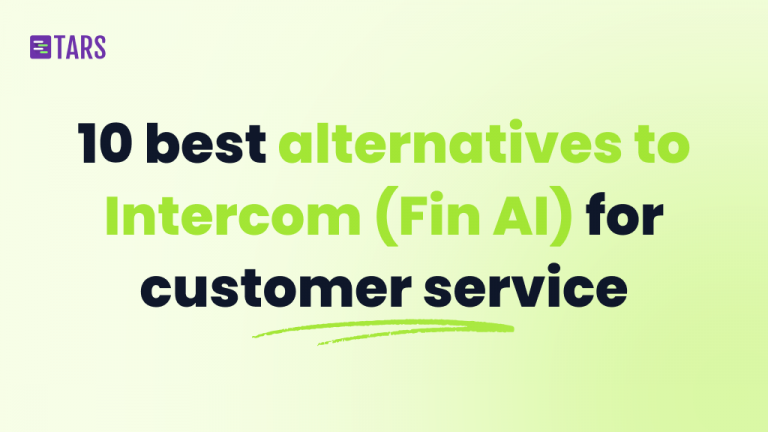
10 best alternatives to Intercom (Fin AI) for AI-powered customer service [2025]
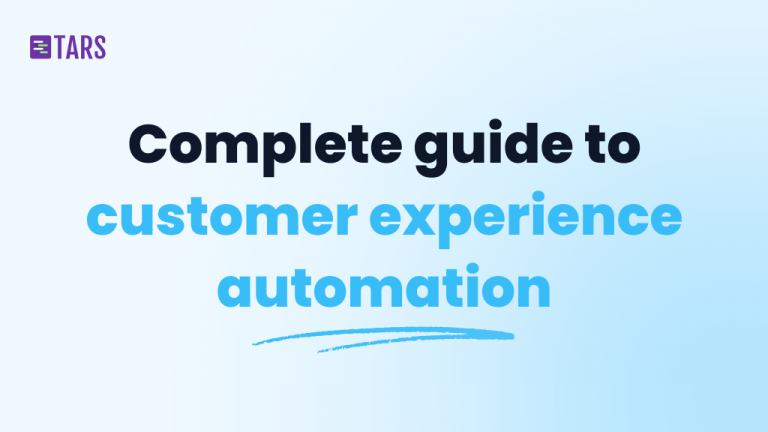
Customer experience automation: The complete guide to CXA in 2025
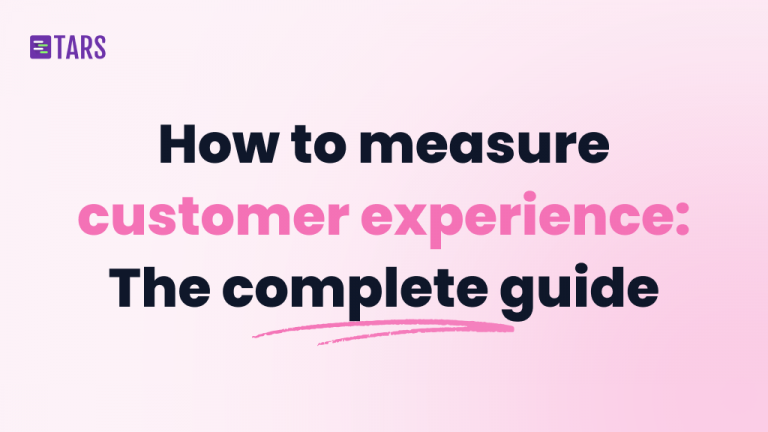
How to measure customer experience: The complete guide for AI-powered support and growth

Our journey in a few numbers
With Tars you can build Conversational AI Agents that truly understand your needs and create intelligent conversations.
years in the conversational AI space
global brands have worked with us
customer conversations automated
countries with deployed AI Agents